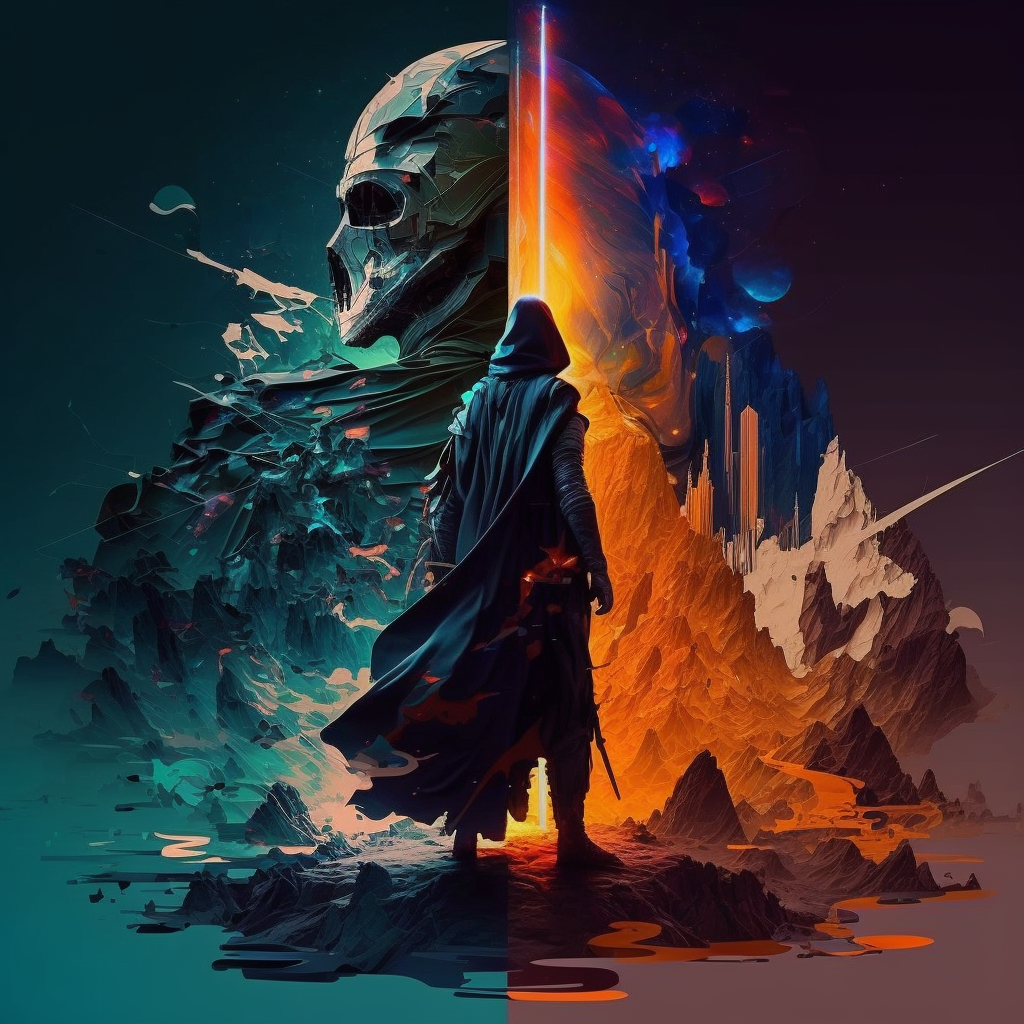When we think about MARVEL, we think about a high-budget studio where hundreds of people tightly control every comic book, movie, and piece of merchandise. And it works. Since the 1960s, this model has created remarkable worlds and characters loved by millions of fans.
But what if we had a better model? The one that gives us 10X more great MARVEL stories and doesn't rely on the taste and financial goals of Disney executives?
I believe we can achieve that if the "next MARVEL" universe operates more like Ethereum, where everyone can develop their own interpretations and adaptations of their favorite stories and make money from them.
And yes, I know what you might be thinking:
- "Disney would never agree to it,"
- "We would see tons of crappy productions,"
- "How do you ensure the people who created the world get paid?",
- "Why the hell do you even link Ethereum and MARVEL?",
- "What do NFTs have to do with it?".
Hold on tight, as we're about to dive deep into the idea of IP Protocols and tackle these concerns head-on.
Every fictional world is a protocol
Let's start with Ethereum/MARVEL analogy.
As we all know, Ethereum is a protocol. And on top of this protocol are apps like Uniswap, MetaMask, and OpenSea that let us interact with it.
What is a protocol? At its essence, it's just a set of rules.
For example, diplomatic protocol explains how to behave around presidents, ambassadors, and senators. Thanks to these rules and standards, government officials don't need to waste energy wondering who speaks first, how they should address each other, and where they must be seated at the table.
Ethereum protocol, on the other hand, explains how you send ETH, how gas fees are calculated, what is the structure of smart contracts and so on. Thanks to these rules and standards, developers don't need to waste energy wondering how they should design their app to ensure it's compatible with Ethereum.
Similarly, MARVEL, Lord of The Rings, Star Wars, and all other worlds protected by IP rights can also be viewed as protocols. And movies, books, and games are apps to interact with these protocols and bring them to life.
To understand this concept better, let's leave MARVEL for a second and get to Star Wars Cinematic Universe, which is less complex and easier to follow.
Star Wars Universe - just like any other protocol - is a pretty small set of rules and standards. And if a producer follows them, a movie, game, or TV series will become Star Wars-ish. Theoretically, even you - as a fan - could follow these rules and create your own Star Wars adventure.
Some of these rules might be hard - e.g., it'd be hard to set up a Star Wars movie in a medieval setting without turning it into a parody. And some might be softer - e.g., you don't need Jedi, Siths & lightsabers to create a Star Wars movie.

Andor is a great example here. In the first Andor's season, they don't even mention a Jedi or a lightsaber. Yet because of the known planets (Coruscant), characters (Palpatine, Mon Mothma), props (TIE Fighters, blasters), and the fight between good vs. evil (Rebellion vs. Empire), we feel that this is Star Wars TV Series indeed.
Of course, to experience Star Wars (or any other Universe), you don't need to study the protocol's set of rules. Just like you don't need to understand how SMTP protocol works to send an e-mail to your mom. You can just watch the movie and enjoy the experience.
So why are these protocols so important?
Fiction worlds protocols accrue value in a protocol-like manner
As we said before, when we watch "Andor", we feel that it's part of the Star Wars Universe. As a consequence, it connects with 30+ years of our "Emotional Value Locked" into this protocol, making the story much more exciting than if it happened in a totally new world.
On top the Andor's plot, we feel satisfaction when we learn the backstory of Cassian Andor, who played a prominent role in Rogue One. It's also intellectually pleasing to connect more dots related to the early days of the rebellion. And learn about the new characters and subtleties of the world we already love. These learnings are collected by fans and updated in Star Wars Wiki called Wookiepedia.
So if movies, books, and games are apps to interact with Star Wars Protocol, then it works in a similar fashion as Ethereum - the more high-quality apps to interact with the protocol, the more valuable the protocol becomes.
Also, protocols like Ethereum get more valuable with an increased number of users and connections between them, known as network effects. And these IP protocols are no different.
If I were the only person in the world who liked Star Wars, it would be a pretty lonely experience. But if I have friends with whom I can discuss the Empire Strikes Back or play SW: Battlefront II, interacting with this world gets far more exciting. It may even become a way to bond with other people - that's why tens of thousands of Star Wars fans attend Universe-related events.
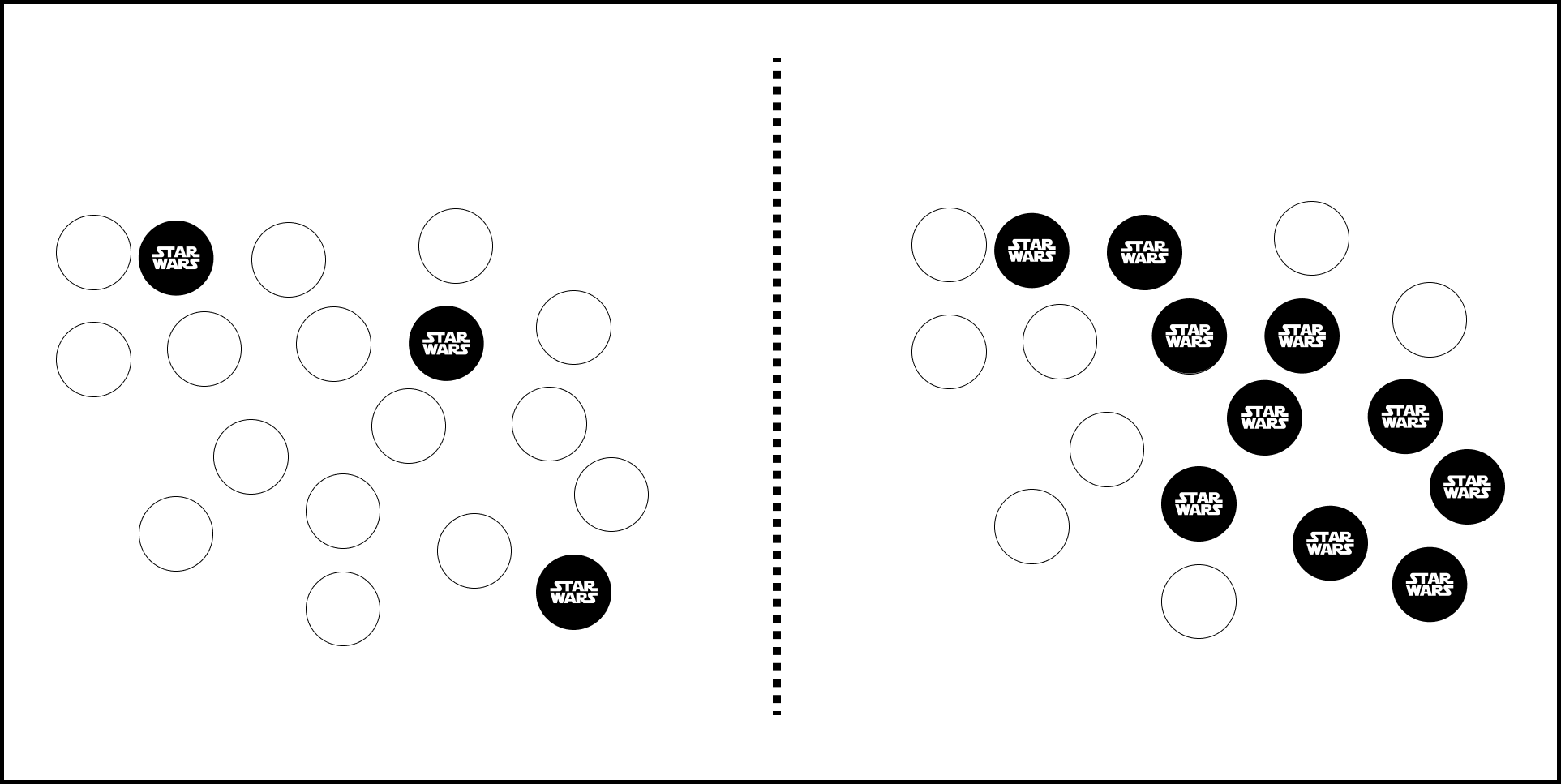
The more Star Wars fans around us, the more people we can talk with about our favorite world.
That's also why movie producers created Ewoks, Jar Jar Binks, and more distinct female characters like Rey - they made the Universe more attractive to new people (in this case: kids and women) so that fans can share their affection with more people.
These actions aimed to generate more "Emotional Value Locked" into the protocol, which can be transformed into money by selling apps - movie tickets, games, and merchandise.
This is also the main thought behind the MARVEL Cinematic Universe. Since 2008 they released 31 films starring different superheroes - cocky Iron Man, virtuous Captain America, funny Guardians of the Galaxy, and over a dozen more. Every fan can find a hero they like.
And then MARVEL connected these worlds (and their fans!) in cross-over Avengers movies, capitalizing on the "Emotional Value Locked" and generating billions of dollars.
That's why Hollywood loves these protocols, also known as "franchises."
And that's also why companies like Disney restrict access to their protocols, contrary to Ethereum, that's fully permissionless. (1)
Both of these ways have their pros and cons.
Power of restricted protocols
Most of the most successful IP Protocols have been restricted.
Star Wars, MARVEL, Lord of the Rings, Witcher, Toy Story, Pokemon, Harry Potter, Dragon Ball… The list goes on and on.
You can, of course, create your free fanfic, fanart, or fan wiki. But you can't make money on it. (2) And only those who own Intellectual Property (IP) rights can build bigger apps (movies, books, merch) to interact with these protocols.
Why? Well, there are at least two reasons.
The first one is control.
Remember "Emotional Value Locked"?
Studios act like hawkish brand managers because they fear destroying this emotional capital built for the last 30+ years. Just like an iPhone user might decide to "never buy an iPhone again" if he gets scammed by the app from AppStore, the Star Wars fan might dislike the Universe if he watched a crappy movie produced by amateurs (3).
It's the same reason Nike doesn't let every shoemaker on Earth use their logo - they'd destroy the brand they've been building for over 50 years.
The second reason is money.
If I asked you what's the highest-grossing movie of all time, you'd probably answer "Avatar". But it's not actually true. The highest-grossing movie of all time is "Toy Story 3".
Why haven't you heard about it? Primarily because box office lists consider only revenue generated from ticket sales. And here's the winner is clear: Avatar made $2.9B at the box office vs. Toy Story's $1B.
But when you consider all money generated by the movie, including merchandise - toys, t-shirts, notebooks with logos, etc. - then the scales are tipped. Avatar made around $150M via merchandise, whereas Toy Story made… $10B.
So overall, Toy Story generated around 3.6X more money than Avatar. Of course, only some % of this money went to Disney since they typically license the IP rights to toys & merch companies instead of producing these things themselves. But it shows how important it is for Disney to restrict access to their "Toy Story" protocol.
And when the protocol is established, "Emotional Value Locked" serves as a moat to protect the world from other protocols. Since audiences' minds are already occupied with "Toy Story," it's hard to break in with a new world and new characters unless they're remarkable. So it further protects Disney's business revenue.
To sum up, restricted protocols, when they reach the tipping point, can become machines that produce high-quality content and generate huge amounts of revenue.
So if it works so well, why would you even consider making them permissionless?
Power of permissionless protocols
Let's compare Disney to Ethereum.
Control here is very loose. You need to comply with the protocol's standards; apart from that, you can build whatever you want. And because of this freedom, the Ethereum ecosystem materialized the worst of Disney's nightmares - hundreds of scams, hacks, and exploits hurt the Ethereum (and crypto's) reputation.
The reputation got damaged to the point where people created websites collecting all web3's failures, and Apple made it hard to introduce crypto-related apps to its AppStore.
When it comes to money… well. Vitalik Buterin and other Ethereum Co-Founders definitely made a lot of money on Ethereum, but there are Ethereum investors, founders & VC funds who made much more. Using Peter Thiel's phrasing - most of the value created wasn't captured by the founders.
So if the results are like this, why would you even make your protocol permissionless?
Of course, there are moral motivations, such as "keeping the Internet open," which I fully agree with.
But even if we put them aside, Ethereum being open led to the creation of many great apps built on top of it. Uniswap, MetaMask, OpenSea, Zapper, Farcaster - all these apps generate value for the protocol. The more great apps there are, the more valuable Ethereum becomes. And none of them need to be created by Ethereum Foundation.
Since you don't need to ask Ethereum Foundation for permission, it's a Wild West - you can make as weird and strange apps as you want. And some of them, like NounsDAO, can counter-intuitively grow into multi-million dollar entities.
This whole process can start a virtuous cycle:
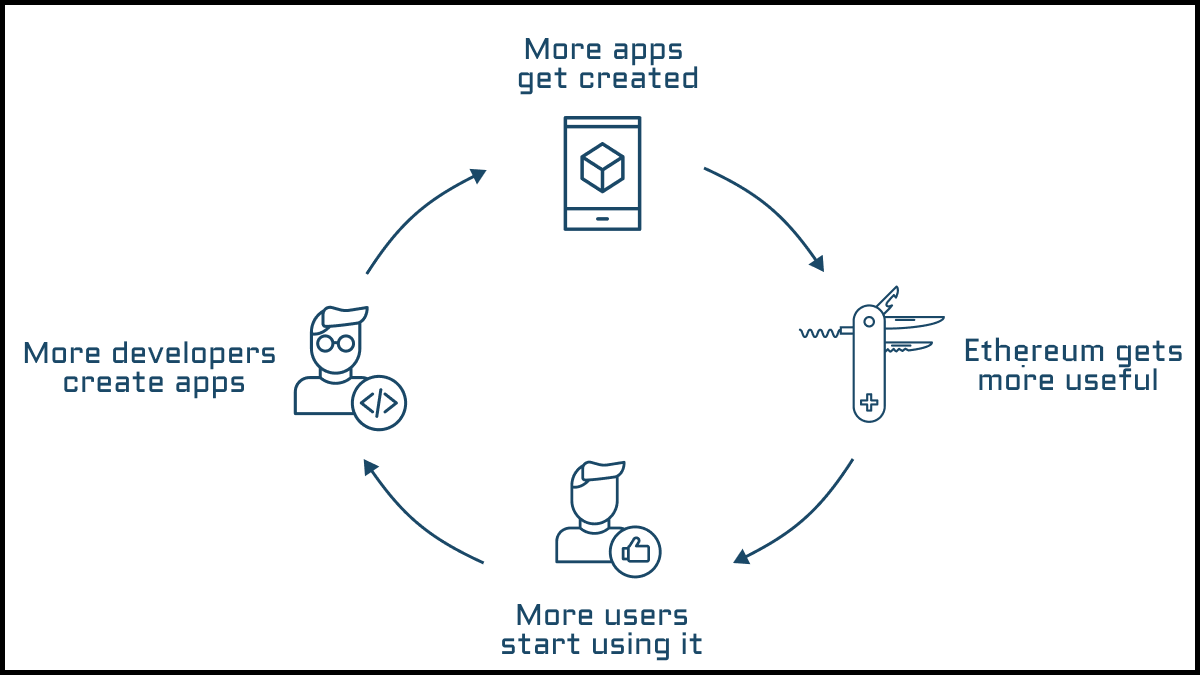
How permissionless design helps to build the protocol's value
And Nouns is a great example of a brand that - contrary to Disney or Nike - is built in a bottom-up manner thanks to its permissionless design.
Most people who own Noun NFT want its brand to be as valuable as possible. So they create different art pieces and memes with Nouns Glasses to make Nouns more popular. And they got to the point where these Glasses became a part of a Super Bowl ad.
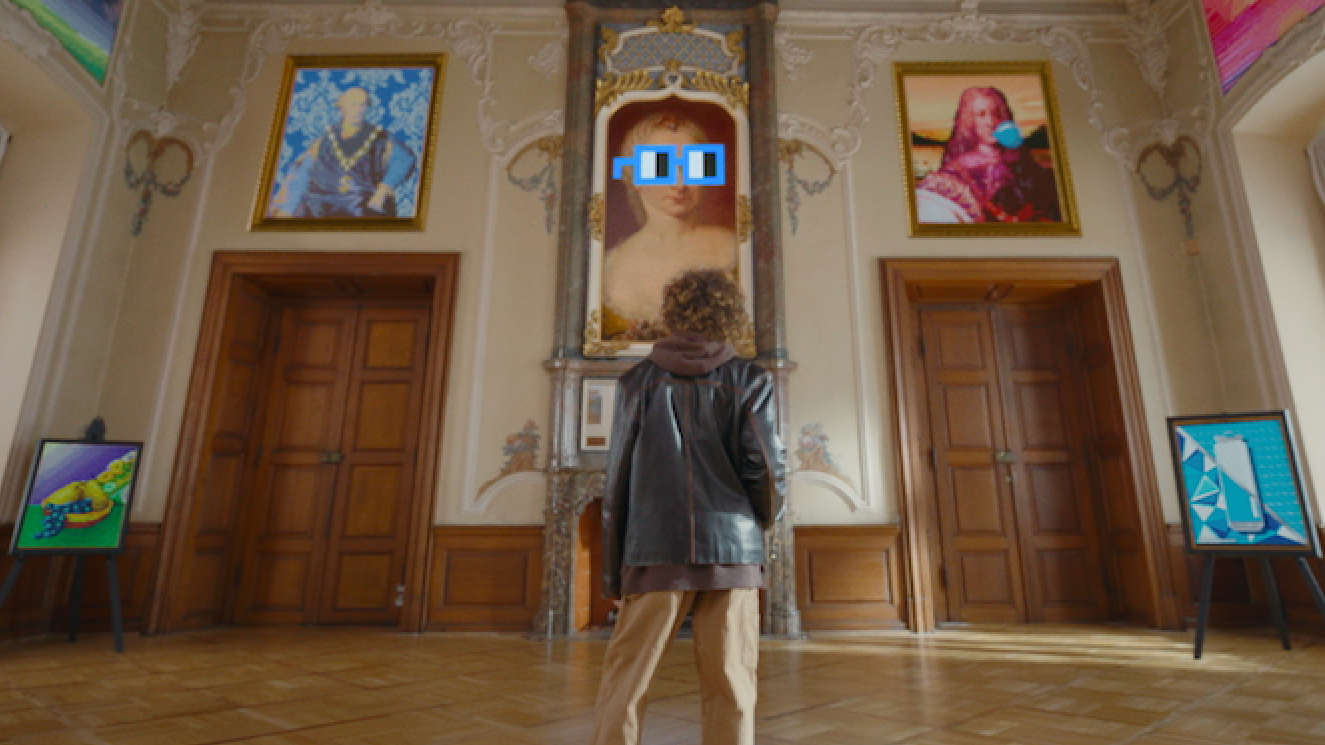
This cycle is, of course, hard to set up. For one Ethereum and one Nouns we have hundreds of failed projects. But if you succeed, your protocol is generated bottom-up: by people for people. I believe you can achieve the same thing with the next MARVEL and Star Wars, where fans will create new movies, stories, and games.
But we need one more ingredient not to get overwhelmed with crap.
Power of Curation
If you have ever touched a new iPhone, you know that without any apps installed, it's not too useful - it's just a toy. But although we all take for granted that thousands of developers compete in building the next great iOS app, it wasn't always that way.
In the early days of the iPhone, you could only use apps made by Apple, just like you can only watch Star Wars movies made by Disney. Back then, these apps were limited to iTunes, Google Maps, e-mail, and a browser. And many people (myself included) discarded iPhone as a "cool but expensive gadget."
A year later, the App Store was launched, opening the iPhone to thousands of developers around the world. Opening the floodgates resulted in many crappy apps, with "fart apps" getting some recognition in pop culture. But in a few years, we got Instagram, Uber, WhatsApp, Tinder & 1000's other apps that became a must-have for millions of people. And these apps, of course, increased the value of the iPhone and let Apple take its 30% cut from every in-app purchase.
So, on the one hand, Apple remains open to apps created by other people - everyone can submit their iOS app and try to reach over 1.5B iPhone users. But Apple also controls what apps get distributed via AppStore, so they mitigate the risk of getting flooded by crap. This dual model makes AppStore one of the most efficient cash cows ever designed.
I believe Disney could use a similar model for Star Wars (and other worlds). We would still have big-budget movies, games, and comic books produced by Disney. But in DisneyStore, we could find also smaller, fan-made productions that would let creators earn recognition and money.
And this model is not weird. We all know Amazon for its Amazon Basics and seamless delivery. But 59% of their products are sold by third-party sellers who are merchants that just handle production, pricing, and delivery themselves. Amazon is just a way to get in front of new customers.
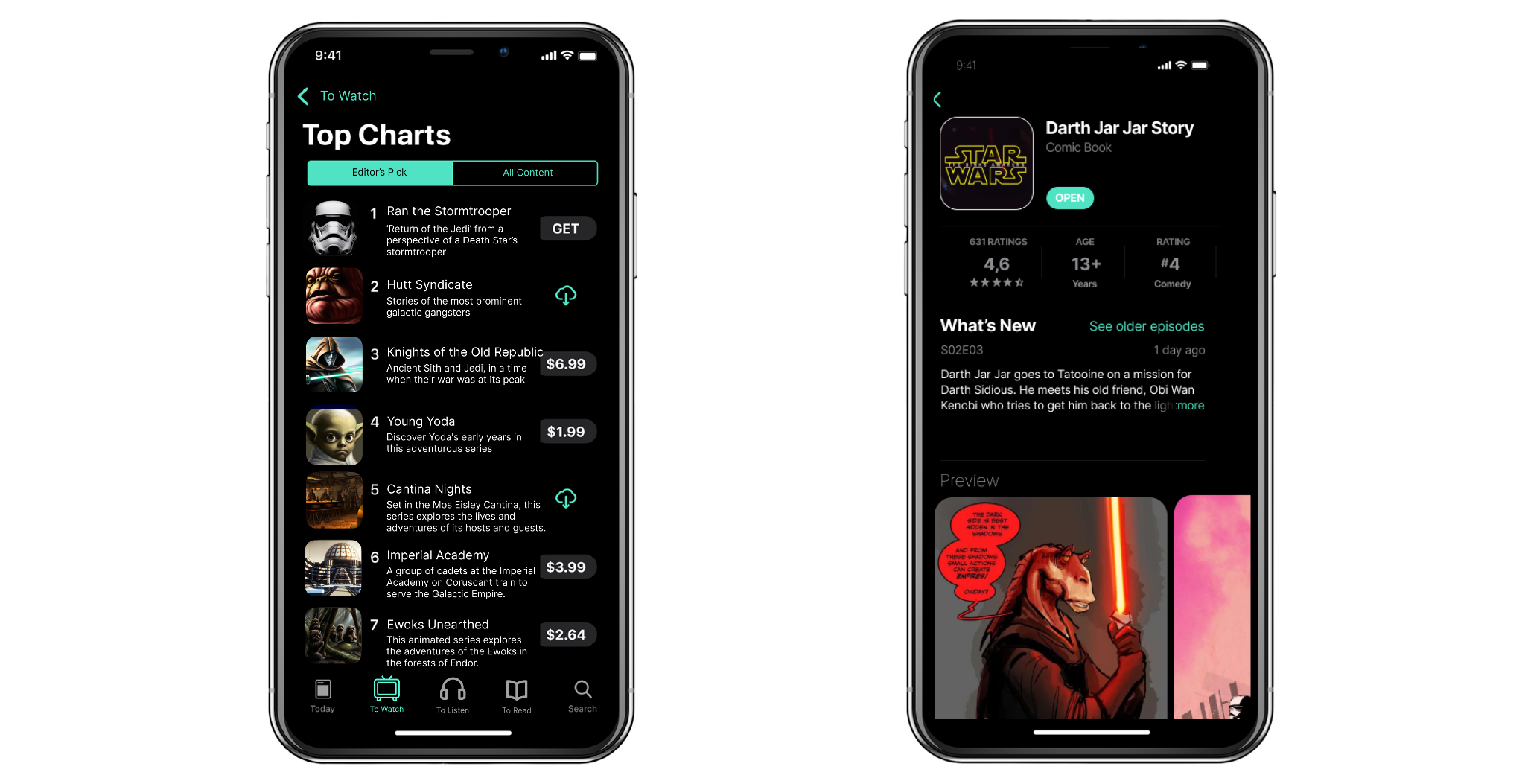
I don't think Disney would take such a risk, though.
So that's why I think the "next MARVEL" will start as an NFT Collection where people - just like in Nouns - create the world in a bottom-up manner. This model would address the biggest problems faced by Disney, Warner Bros., Netflix, and all other prominent IP creators. What are these problems?
Read IP Protocols Part II here.
Subscribe below to not miss my other posts.
PS1: You can collect this post by clicking the button below.
PS2: I'm also writing a serialized cyberpunk novel called Cael Mux. The idea of this "choose your own adventure" story is to explore the boundaries of IP Protocols.
You can read Chapter 1 here.
(1) But wait, can we even call Star Wars a protocol if protocols are supposed to be open and permissionless like SMTP or Internet Protocol? I'd argue that we can. Access to some protocols - like Twitter or Skype - can be restricted, and in a tech context, we typically call them platforms then. But I stick to the word protocol because locking a protocol in a cage by a single entity doesn't necessarily change its protocol-ish nature. Fiction worlds are examples of protocols that are hard to break.
(2) I've heard there is a phrase among the US copyright lawyers - "Don't fuck with the Mouse", that highlights the tenacity of Disney's lawyers. According to Reddit, sometimes these Mickey Mouse lawyers are called Nazguls.
(3) As we know from Episodes 7-9, centralized control over content isn't enough to guarantee that the Star Wars brand won't deteriorate, but at least it gives Disney team some agency.
- Loading comments...
